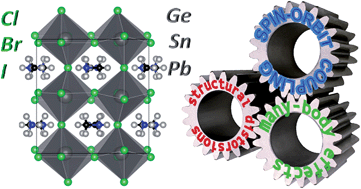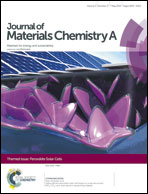Interplay of spin–orbit coupling and lattice distortion in metal substituted 3D tri-chloride hybrid perovskites
Abstract
Within the scope of this ‘Perovskite Solar Cells’ themed issue, following their rise to superstardom for photovoltaics, we herein begin by recalling a couple of pioneering studies and basic concepts useful to rationalize structure–property relationships that have already been investigated by several decades of active research on hybrid perovskite materials. Effects of band folding and octahedral tilting related to structural phase transitions are given particular emphasis. Next, we investigate theoretically metal substitution based on available crystallographic data of the tri-chloride CH3NH3MCl3 (M = Pb, Sn, Ge) crystal structures, having a 3D inorganic network of corner-shared octahedra. In fact, both the chlorine-based hybrid perovskites and metal substitution have not received much attention from materials science theoreticians. Moreover, metal substitution leads to additional crystal structure diversity with formation of pyramidal MCl3− ions. Distinct focus is paid to their optoelectronic properties, especially band-gap and absorption. Moreover, investigation of bromide and iodide analogues reveals that spin–orbit interaction stemming from halogens may also be significant, especially for iodine. This can be analysed from the atomic charges calculated through the Atom In Molecules (AIM) quantum theory.

- This article is part of the themed collection: Perovskite Solar Cells

 Please wait while we load your content...
Please wait while we load your content...